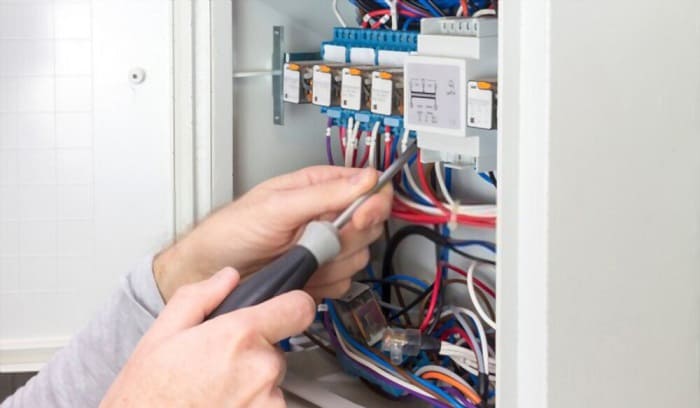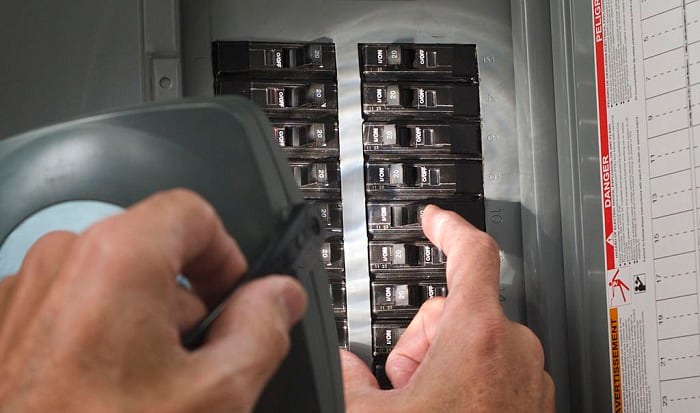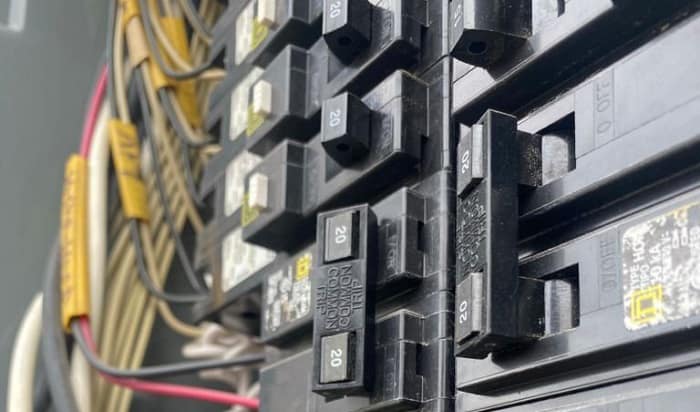Modern panel boards and breakers have excellent and intelligent safety features. It is the reason why many homeowners replace their outdated load centers with new ones.
If you are one of them, you may wonder, “Can a homeowner replace electrical panel to save money on expert services?”
To explicitly address this question, the answer is yes. However, some critical factors must be considered before replacing your home’s breaker box.
Table of Contents
Can I Replace My Breaker Box Myself?
Almost all states in America will not allow DIY electrical panel replacement. Depending on each city’s standards, there may be some restrictions, like requiring a permit or demanding the work to be done by a licensed electrician.
In cases where DIY work is okay, homeowners often need to get a permit themselves.
For example, in Coronado in California, homeowners can replace their panels according to their building code. But if the work doesn’t pass inspection, professionals must be hired.
The same thing applies if you live in Florida; even though authorities will allow you to upgrade electrical panel yourself, you will need to get a permit first.
This is a requirement of Florida building codes, which dictate that all changes in a house, including constructing, repairing, or even replacing any home electricals, must be done with a permit.
Similarly, in Texas, not all cities allow homeowners to replace electrical panels. For this reason, if you are living there, you first need to contact your local city inspector to see if you are allowed to work on your panel.
The same Is true in Ohio; some cities like Hamilton and Middletown prohibit you from working on your panel as they require licensed professionals.
Basic Procedure for Changing Out Electrical Panel
If you intend to upgrade your old electrical panel to 200 amps or even higher, ensure your electric meter connection is rated for it. If not, you may need to change your electric meter first before proceeding with the upgrade.
Here’s some basic information if you’re curious about how the operation works.
- Cut the primary power source (the utility company can do this).
- Remove all the connections of your old panel, including the connections to the main breaker.
- Take out the old panel from the wall.
- Place the new 200-amp panel. This may include enlarging the hole in the wall to fit the new box.
- Install a grounding connection using a copper electrode.
- Install circuit breakers and reconnect all the old, functional wirings. If some of the wirings are not in good shape, replacing them with new ones for safety purposes is a good idea.
- Install new circuits for additional outlet connections or appliances needing dedicated circuits.
- After the steps above, it is now time to call the building inspector to inspect the work.
- If your work has been inspected and approved, you can call the utility company to reconnect the main power source outside.
- Do the final checking of every circuit connection of the panel.
If done by a professional, this process may last eight hours or longer.
Signs that You Need to Change an Electrical Panel
1. Wiring Issue
Faulty wiring is the leading cause of household electrical fires in the United States. This problem is typically seen in an older circuit or electrical system.
Older electrical wirings may not match modern wire insulation and other material standards, or they might simply have deteriorated over time.
Here are several indicators that you may have faulty electrical wiring.
- Frequent flickering or dimming of lights
- A burning odor emanating from any portion of the electrical system, including outlets and the breaker box
- A slight, electric shock when touching appliances
- Faulty or outdated electrical outlets
2. Having New Appliances
When purchasing new appliances (i.e., air conditioners, electric stoves, furnaces, or any high-powered gadgets), it is important to check your electrical panel to see if it has enough amperage.
Newer appliances typically have greater electricity demands that your older electrical panel may not be able to support. In this instance, you will also require a more powerful panel to give them the power they need.
3. Having a Fuse Electrical System
Fuse panels can still be found in some older residential houses. If you are still using an electrical fuse panel, changing it is advisable.
Both fuses and breakers can provide protection from overcurrent that can damage your devices. However, unlike fuses that can only be used once, a circuit breaker is reusable and can be reset after every fault.
The worst part about having a fuse panel is the lack of insurance providers. It is difficult to find insurance companies willing to cover properties with fuse panels.
4. Using Too Many Power Strips
Using multiple power strips or extension cords in one circuit increases the likelihood of fire hazards. The best solution to this problem is to install a new circuit and outlet.
This way, you can use your devices safely in separate circuits. If your current electrical panel cannot support a new circuit, it is now time to replace it with a higher amp panel.
5. Planning Ahead
If you intend to sell your home or property, upgrading your electrical panel is an excellent idea. Panel upgrades improve a home’s safety while also increasing its value.
Investing in a high-quality electrical system will also help you gain positive attention from buyers.
FAQs
Do I Need a Permit to Replace My Electrical Panel?
Yes, most home electrical repairs need a permit from a local municipality, especially for big projects. Working without permit can be considered a code violation, resulting in fines.
The cost of a permit to replace an electrical panel may vary, depending on where you reside. In some cities, you may expect to pay a total of $112, which includes the Code council fee.
What Does it Cost to Replace an Electrical Panel?
The cost to replace the breaker panel with a 100 or 400 amps one might range from $850 to $4,000. Aside from panel amperage, the cost may vary depending on the house style and the number of circuits.
Installing new electrical panel might cost you more than replacing, especially if you want a full renovation of your electrical system.
How Do You Replace an Old Electrical Panel?
Replacing electrical service panel might start with working on permits, upgrading the electric meter, removing the old panel, and installing the new one.
This process must be done without power running through any circuits for safety. Without turning off power sources, you run the risk of electrical shocks, resulting in serious physical injury or even death.
If you need to get the task done by yourself, you can consider the basic procedure of upgrading the electrical panel above.
Conclusion
Can a homeowner replace electrical panel? It is certainly possible in some cases, and conducting a DIY electrical panel upgrade will indeed allow you to save money.
However, you must have a substantial amount of knowledge to proceed as one wrong move may result in significant damage and injuries.
Furthermore, there may be a chance that home insurance may not cover the injury and damage from your work.
If you find the process difficult, calling a licensed electrician is the best option. They can set up an electrical system safely and more quickly than you.

I am Edwin Jones, in charge of designing content for Galvinpower. I aspire to use my experiences in marketing to create reliable and necessary information to help our readers. It has been fun to work with Andrew and apply his incredible knowledge to our content.



